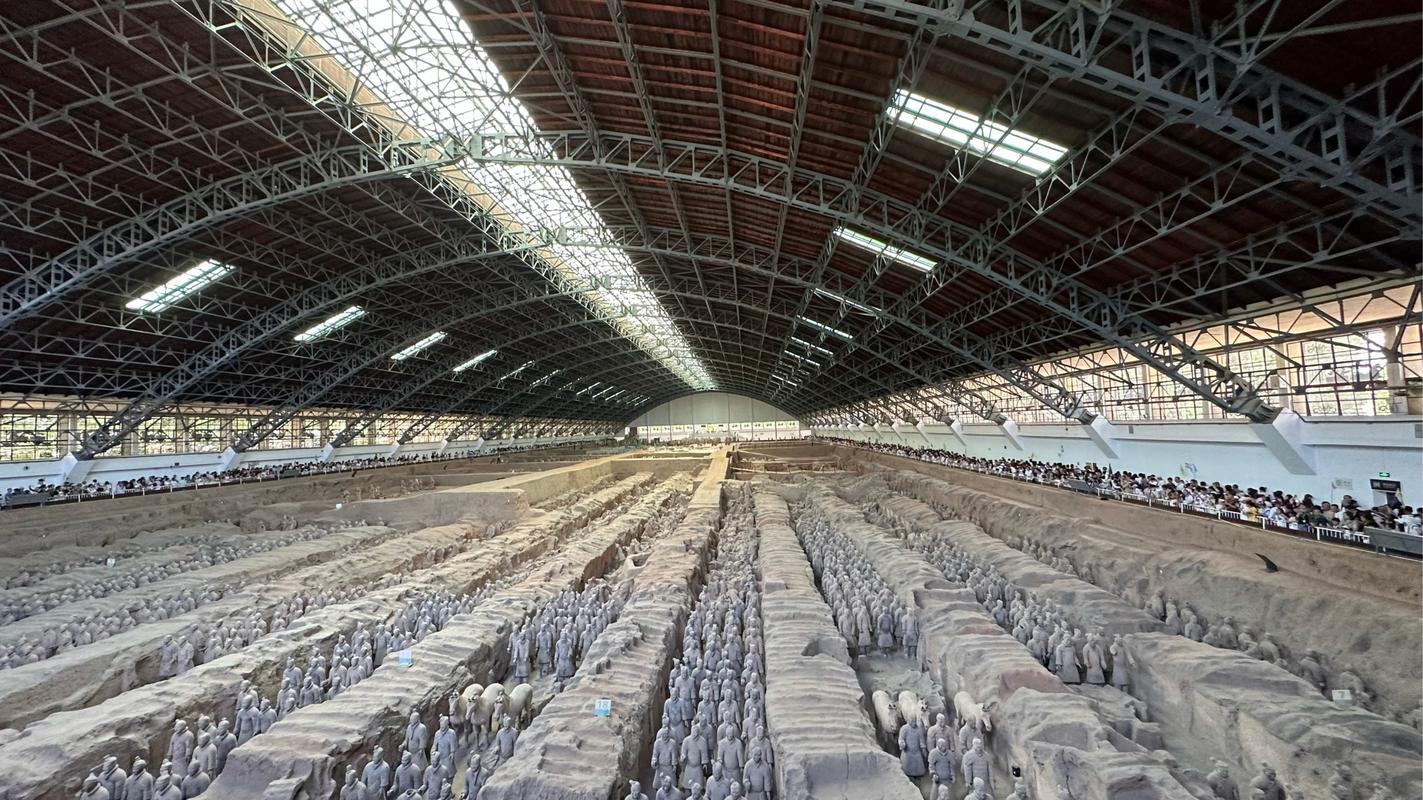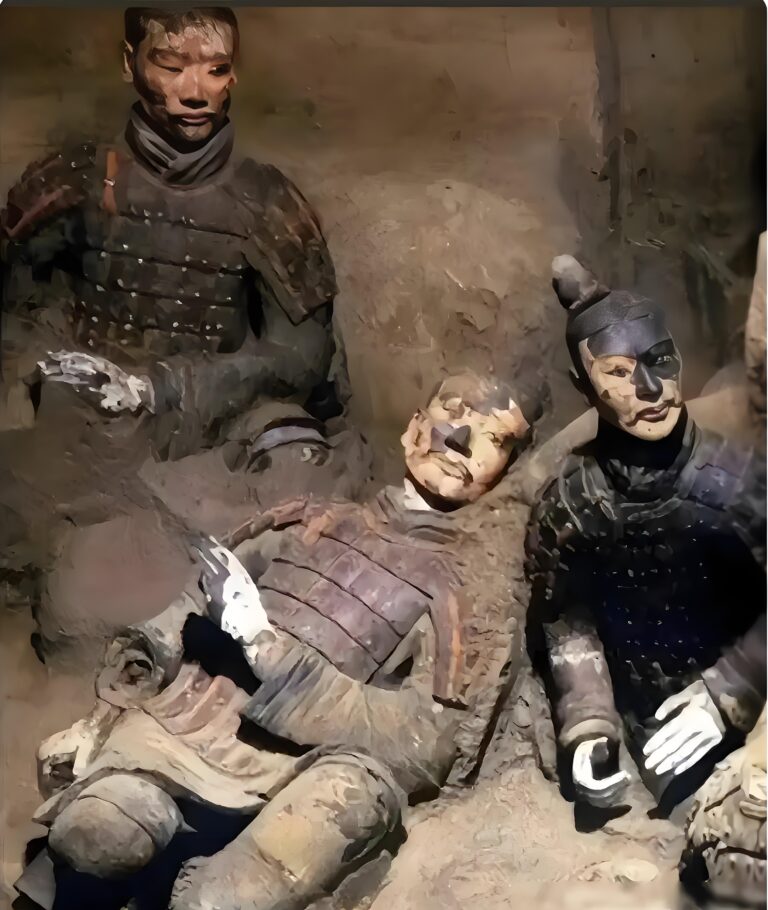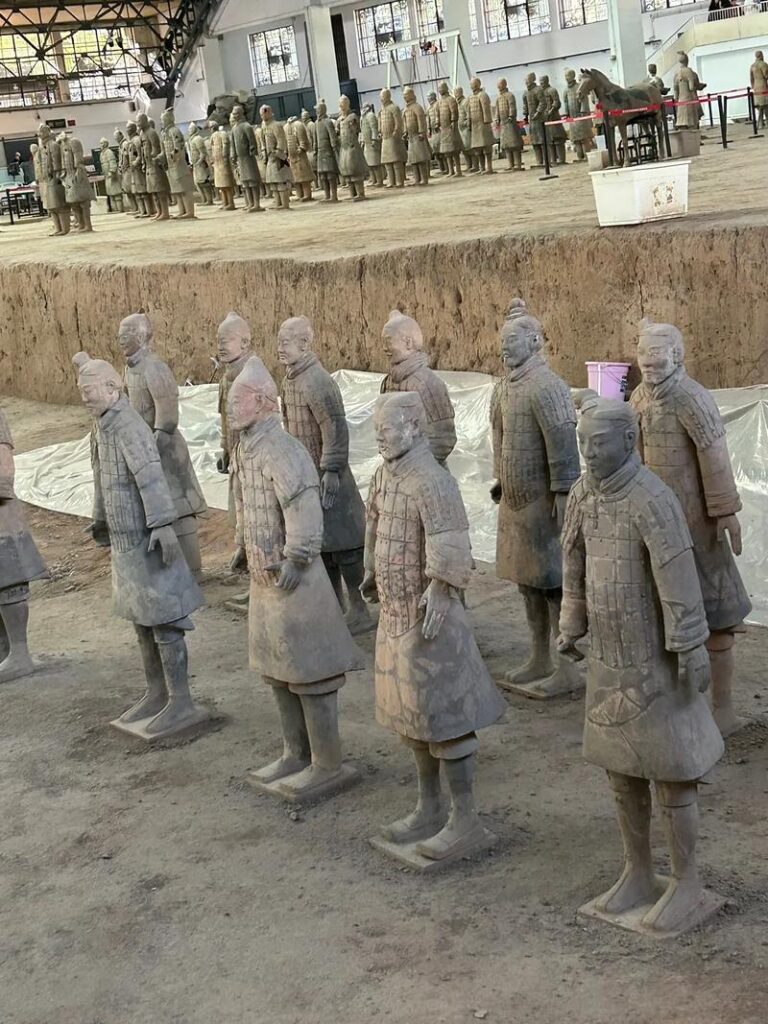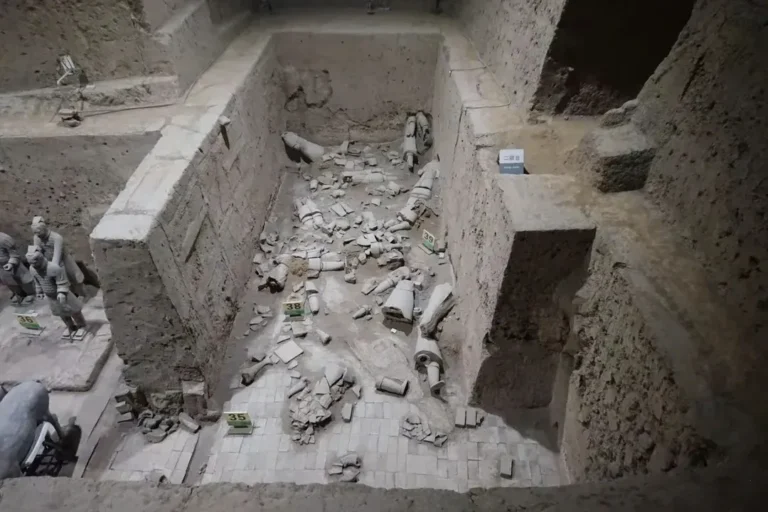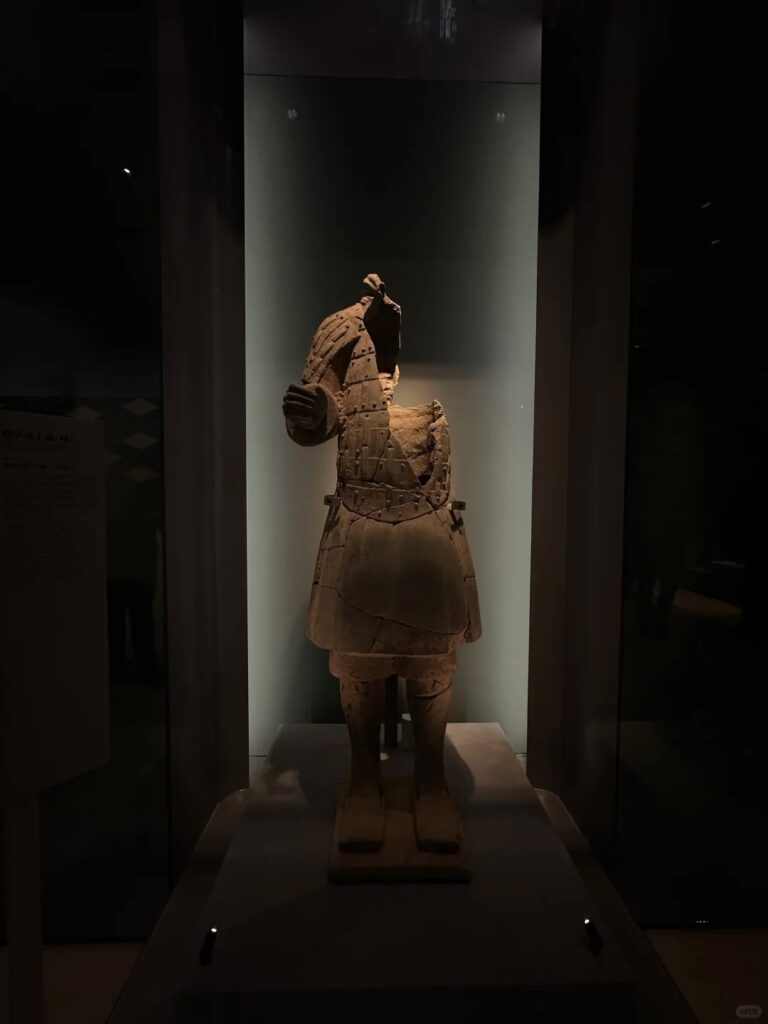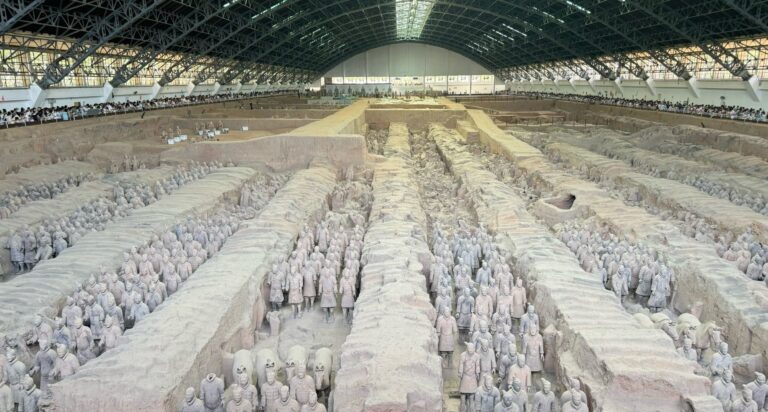What do the Terracotta Warriors represent?
A Thousand-Year Gaze: What Do the Terracotta Warriors Represent?
Standing before the Eighth Wonder of the World—the Terracotta Army of Emperor Qin Shi Huang! Facing this massive, lifelike underground army, one cannot help but feel awe—and perhaps a lingering question: What do these silent clay soldiers truly represent? Today, let us peel back the layers of history and explore the profound meaning behind the Terracotta Army.
Part One: An Army Guarding Eternity—The Ultimate Symbol of Imperial Power
Imagine Emperor Qin Shi Huang—China’s first emperor. Over two thousand years ago, he unified a China that had been divided for centuries, establishing a vast centralized empire where his power reached its zenith. He not only sought to rule the world of the living but also yearned to maintain his supreme authority in the afterlife.
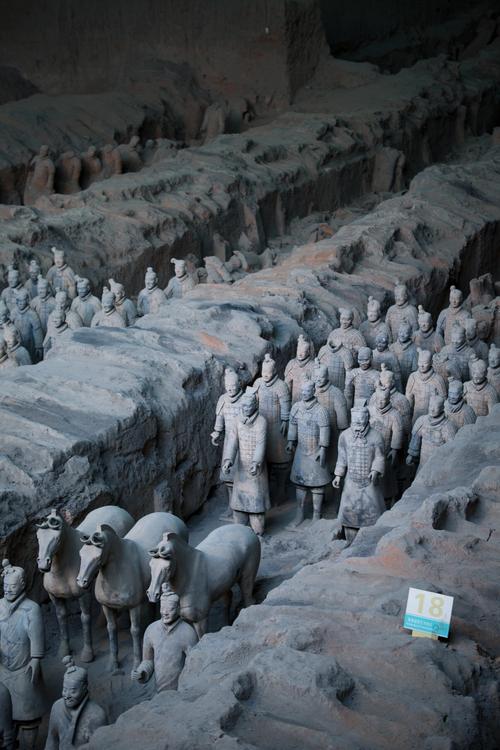
The ancient belief of “treating the dead as one treats the living”: Ancient Chinese people (especially emperors) believed that death was merely a transition to another realm of “life.” Therefore, they hoped to enjoy the same (or even better) treatment and pomp in the afterlife as they did in life. This is akin to modern people hoping to take their beloved cars, phones, or even pets with them to the afterlife—only Emperor Qin Shi Huang’s “luggage” was on an unprecedented scale!
The mission of the terracotta soldiers: The terracotta army was the loyal guard force Emperor Qin Shi Huang prepared for his “afterlife empire.” They are neatly arranged on the eastern side of the tomb, facing east (the direction of his main enemies when he unified the six states), ready to respond to the call and continue to fight for the emperor and guard his soul. The existence of this army is an extension of Emperor Qin Shi Huang’s supreme power in the afterlife, representing his ultimate pursuit of eternal rule. It silently proclaims: even death cannot shake the emperor’s majesty.
Part Two: A Three-Dimensional History Textbook—A True Snapshot of Qin Dynasty Society
The terracotta warriors are not merely a collection of clay figures; they are more like a 3D history book written in clay, offering a valuable window into the society, military, technology, and art of the Qin Dynasty.
A “living fossil” of ancient military tactics:
Authentic Military Formation Layout: Pit One houses the main infantry formation, Pit Two features elite troops of multiple units (archers, cavalry, chariots) fighting in coordination, and Pit Three serves as the command center. This “pin” formation layout demonstrates the Qin army’s highly organized and scientifically sound combat philosophy, which formed the military foundation for the Qin’s unification of the six states. You can clearly see how ancient wars were strategically arranged.
High-quality weapons and equipment: The unearthed weapons (such as bronze swords, crossbows, and arrowheads) are meticulously crafted, with some still as sharp as new and treated with anti-corrosion measures (chromium salt oxidation technology). This demonstrates the astonishing military technological achievements of the Qin Dynasty.
A clearly defined military rank system: By closely observing the clothing, hairstyles, armor, and even beards of the terracotta warriors, one can discern their identities: ordinary soldiers, military officers, mid-level officers, and high-ranking generals. This reflects the Qin army’s strict hierarchical system.
The “artistic peak” of Qin Dynasty craftsmen:
A miracle of a thousand faces: What is most astonishing is that the terracotta warriors were not mass-produced using molds! Although there are mold marks on the body parts, each terracotta warrior’s head, facial features, expression, and hairstyle are unique! The craftsmen endowed them with distinct personalities: some are young and innocent, some are weathered by time, some have a determined gaze, and some appear deep in thought. This required extraordinary realistic techniques and artistic creativity! They were like portrait sculptors from two thousand years ago.
The Lost World of Color: Don’t be fooled by the current terracotta color! When the terracotta warriors were first created, they were vibrant and lifelike! The soldiers wore vibrant red, green, purple, and blue battle robes and armor, with their skin tones, hair colors, and eye colors meticulously painted. Although most of the colors faded quickly after excavation (a great regret in cultural heritage preservation), the remaining traces are enough to imagine the stunning visual impact of that “real” army. This represents the pinnacle of mineral pigment use and painting techniques at the time.
Part Three: A Unique Philosophy of Life and Death—The Cultural Code of “Treating the Dead as the Living”
The Terracotta Army deeply reflects the unique views on life, death, and the soul of ancient China, particularly during the Qin Dynasty.
Companionship and Service Beyond Death: The concept of “treating the dead as one would the living” is the core idea. Qin Shi Huang not only required an army for protection; his tomb (according to historical records and surveys) should also have included models or actual replicas of palaces, government offices, exotic animals, and performers (the “hundred arts figurines”), forming a miniature replica of an underground empire. The terracotta warriors represent the military force tasked with safeguarding the empire’s security. This reflects a belief that death is not an end but the beginning of another form of existence, where one’s identity, power, and needs in the afterlife are equally important—and may even require greater strength (such as this army) to ensure their fulfillment.
The relentless pursuit of “immortality”: replacing human sacrifices with such a massive, lifelike, and resource-intensive terracotta army (reportedly involving 700,000 artisans over nearly 40 years) was itself a form of “progress” (though still brutal). It embodies Emperor Qin Shi Huang’s intense desire for his achievements and authority to endure even after his physical body perished. The terracotta army is the material embodiment of his pursuit of “immortality.”
Part Four: A Common Monument of Humanity—An Eternal Dialogue Between Civilization, Art, and Technology
Ultimately, the significance of the terracotta army has long transcended the scope of Emperor Qin Shi Huang and the Qin Empire, becoming a shared cultural treasure and crystallization of wisdom for all humanity.
The pinnacle of ancient organizational capability: Imagine, over 2,200 years ago, without large-scale machinery or modern communication tools, managing thousands of artisans, coordinating the extraction, transportation, shaping, firing (with temperature control up to 1,000 degrees Celsius), painting, transportation, burial, and arrangement of the terracotta army—a series of complex processes—and ultimately completing such a grand-scale, meticulously detailed project, This alone serves as unparalleled proof of ancient China’s organizational management, engineering technology, and logistical capabilities! Its complexity and scale are no less impressive than the construction of the Egyptian pyramids.
A Eastern Paradigm of Realistic Art: While the West has the realistic sculptures of ancient Greece and Rome, in the East, the Terracotta Army of Qin, with its life-sized figures and highly personalized characteristics, stands as a unique and brilliant chapter in the history of world sculpture art. They demonstrate the ancient Chinese artists’ remarkable understanding and expressive power in terms of human anatomy, dynamic capture, and individual expression.
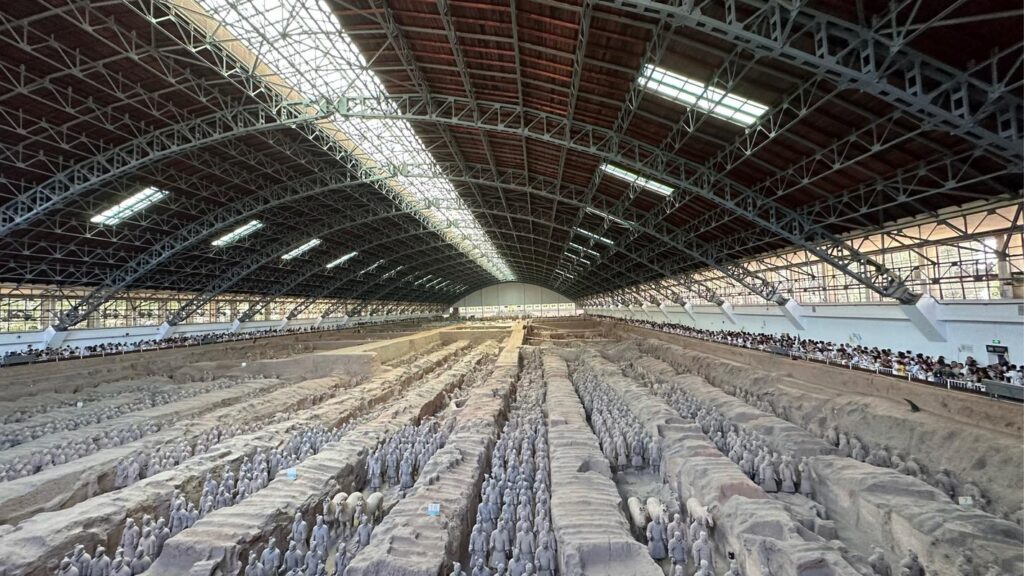
A spiritual bridge between modernity and antiquity: Today, when we gaze upon these terracotta soldiers, we are not merely viewing an artifact but engaging in a dialogue across time and space. We marvel at the ancient people’s wisdom and craftsmanship (how did they fire and paint them? how did they manage them?), admire their beliefs and aspirations (even their arrangements for death were so grand), and deeply appreciate the importance of protecting this fragile heritage (paint protection, restoration techniques, combating pollution). Behind every restored terracotta figure lies the immense effort of modern archaeologists, cultural heritage scientists, and restorers. They use technological methods (such as “moisturizing masks” to protect the painted surfaces, “air curtains” to block pollution, and 3D scanning to create digital archives) to safeguard this gift from the past.
When you stand by the Terracotta Army pits and see this silent army, please remember the multiple meanings they represent:
* They symbolize the ultimate pursuit of eternal power by an emperor of unparalleled greatness.
* They are a three-dimensional encyclopedia of Qin-era society, military affairs, technology, and art, written in clay.
* They carry the unique views on life and death and beliefs in the soul of ancient China.
* They are the pinnacle of human organizational ability, artistic creativity, and engineering wisdom, a shared monument of civilization for all humanity.
* They are also a bridge connecting the past and present, reminding us of our shared responsibility to respect history, protect heritage, and pass on civilization.
The Terracotta Warriors are not merely a group of clay figures. They are a visible army guarding the invisible dreams of an empire, ancient wisdom, cultural codes, and the quest for eternity. Though silent, they narrate a historical epic more grand than any written text.

